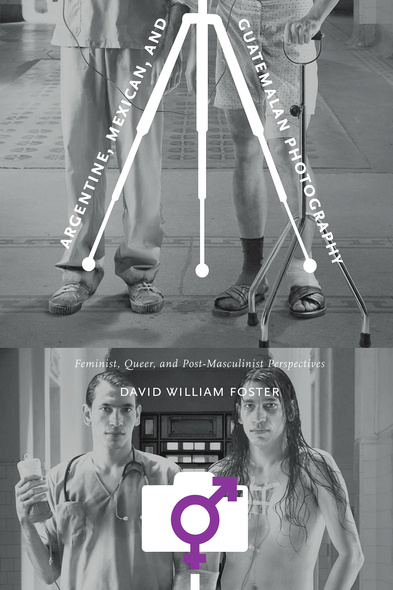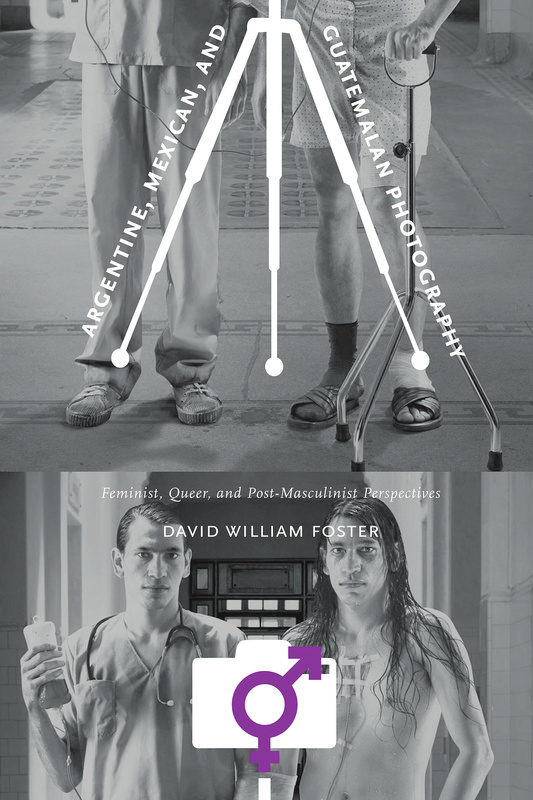Argentine, Mexican, and Guatemalan Photography
Feminist, Queer, and Post-Masculinist Perspectives
One of the important cultural responses to political and sociohistorical events in Latin America is a resurgence of urban photography, which typically blends high art and social documentary. But unlike other forms of cultural production in Latin America, photography has received relatively little sustained critical analysis. This pioneering book offers one of the first in-depth investigations of the complex and extensive history of gendered perspectives in Latin American photography through studies of works from Argentina, Mexico, and Guatemala.
David William Foster examines the work of photographers ranging from the internationally acclaimed artists Graciela Iturbide, Pedro Meyer, and Marcos López to significant photographers whose work is largely unknown to English-speaking audiences. He grounds his essays in four interlocking areas of research: the experience of human life in urban environments, the feminist matrix and gendered cultural production, Jewish cultural production, and the ideological principles of cultural works and the connections between the works and the sociopolitical and historical contexts in which they were created. Foster reveals how gender-marked photography has contributed to the discourse surrounding the project of redemocratization in Argentina and Guatemala, as well as how it has illuminated human rights abuses in both countries. He also traces photography’s contributions to the evolution away from the masculinist-dominated post–1910 Revolution ideology in Mexico. This research convincingly demonstrates that Latin American photography merits the high level of respect that is routinely accorded to more canonical forms of cultural production.
David William Foster’s groundbreaking study provides fresh critical perspectives on the ways in which transgressive themes of gender and sexual identity are made visible through diverse photographic displays of male and female bodies. Impressive for the extensive range of gender-marked subject matter and artistic styles explored, this pioneering volume offers a compelling exposé of a pervasive embodiment of gendered ideologies. Given the current widespread interest in interdisciplinary academic engagement with visual cultures, it remains surprising that this pioneering volume is the first to deliver a comprehensive overview of gendered and queer trends made visible in Latin American photographic production. This is a book that will have significant impact in Latin American gender and media studies.
Preface
Chapter 1. Dreaming in Feminine: Grete Stern's Photomontages and the Parody of Psychoanalysis
Chapter 2. Annemarie Heinrich: Photography, Women's Bodies, and Semiotic Excess
Chapter 3. Woman, Prostitution, and Modernity in Fin-de-siècle Mexico
Chapter 4. Buenos Aires and Women in Crisis: The Photography of Silvina Frydlewsky
Chapter 5. Girls Will Be Girls: Daniela Rossell's Ricas y famosas
Chapter 6. Pedro Meyer: Constructing Masculinities, Constructing Photography
Chapter 7. Discovering the Male Body: Marcos Zimmermann's Desnudos sudamericanos
Chapter 8. Queering Gender in Graciela Iturbide's Juchitán de las mujeres
Chapter 9. Guille and Belinda: A Protolesbian Arcadian Romance
Chapter 10. Homosocialism \D Homoeroticism in the Photography of Marcos López
Chapter 11. Performing Masculine Heterosexuality in Stefan Ruiz's Photography of Mexican Soap Operas
Chapter 12. Helen Zout's Desapariciones: Shooting Death
Chapter 13. Documentary Photography as Gender Testimony: Daniel Hernández-Salazar's So That All Shall Know
Notes
Works Cited
Index






